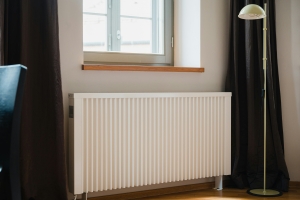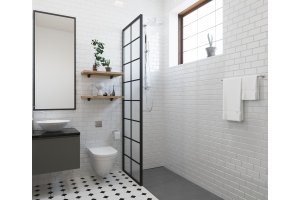Hot Water Cylinders Guide- Explore it All
Hot water cylinders (HWC) have been an indispensable part of the home heating system for decades. The importance can be understood by just imagining a fault in a hot water cylinder of your home in the middle of the winter season. Even the thought of it gives you chills, right? Therefore, unless you understand your domestic hot water system's major constituents, don't click that 'Buy Now' button- An uninformed decision can drain your money and efforts! Trade Plumbing experts have stepped forward to equip you with all the necessary information before you buy a hot water cylinder. Let's dive into the deep waters of information to explore every bit of it.
The Basic Function- What’s the Purpose?
Hot water cylinders are often referred to as water heaters or hot water tanks. These vessels basically store water coming from the main water supply pipelines at an elevated temperature of 60 to 65C. To lower the water temperature (35-45) to make it fit for use, it is mixed with cold water at the point of the tap. In this way, the whole house gets the supply of warm water without having to wait for the cold water to get hot. Not only these hot water cylinders save you from the hassle of waiting for the water to get hot, but they are also a gateway to sustainability as the storage medium is just non-toxic water.
Types of Hot Water Cylinders
A hot water cylinder is usually incorporated in heating systems with a combination with boilers. The boilers do the heating (Read here: How a boiler heater water in your HWC?) and HWCs store the water at the higher temperatures-An efficient way this is to avoid energy loss if there is not much demand at the moment but water has been heated by the boiler. Due to a variety in design combinations in heating systems, there exists a variety in types of HWCs too. All of them lie under these main categories:
-
Vented and Unvented Hot Water Cylinders
-
Direct and Indirect Hot Water Cylinders
The first classification is based on the difference in the process of working of the HWCs. The latter classification is based on the difference in types of heating between the two.
Want to learn more? Let’s Keep Rolling!
Vented hot water cylinders or unpressurised hot water cylinders
These kinds of HWCs are a part of open systems where a cold-water tank/header/cistern (called feed and expansion tank) is placed at a high point of the building (mostly in the loft) to create a head pressure. This head pressure is to make sure that the cylinder remains filled. They work on a gravity-fed system rather than water pressure.
The Process:
Coldwater enters in a vented hot water cylinder and gets heated via an immersion heater or boiler, which then goes to the point of use via pipes. During the heating process, the water in HWC expands and is likely to flow back to the feeder tank. There is a vent pipe to control this expansion of water that makes this cylinder an open vented vessel.
These cylinders are amongst the easiest to install and maintain but do require a cold water storage tank to work in conjunction with them.
Unvented hot water cylinders or pressurised hot water cylinders
Unvented Hot Water Cylinders do not need a cold water storage tank, instead, they are fed by the mains and as such rely on mains water pressure. Coldwater enters the unvented water cylinder and is then heated and fed to the hot water taps, at mains water pressure. One of the biggest advantages of the unvented system is that because the unvented cylinders do not rely on gravity to provide pressure, they can be located anywhere in the property.
Direct Cylinders
A direct hot water cylinder heats the water itself - with the use of an inbuilt immersion heater. All direct cylinders contain at least one immersion heater, with some models having more, and therefore heating the water quicker. Put simply, cold water enters these cylinders, heated inside - leaving as hot water.
Indirect Cylinders
Indirect cylinders provide the same functionality as a Direct Cylinder but operate in a different way. Indirect cylinders are filled with cold water, then heated inside the cylinder by a heating element which can come from either the boiler or other sources of heat - such as solar panels. The coil inside the cylinder is then heated and in turn, heats the water within the cylinder. Hot water is then provided from the cylinder.
Where do I find all the hot water cylinder sizes?
Analysing the number of bedrooms, bathrooms and showers at your place is the most convenient way to determine what size and capacity specifications you need in your hot water cylinder. Here is a table to make the picture clear for you.
The best part is, that at Trade Plumbing you can find any hot water cylinder sizes that you want. UK’s state-of-the-art and time-tested brands like Gledhill cylinders and Kartell UK have listed their premium products on Trade Plumbing. Explore a wide range of hot water cylinders and thermal stores.
At Trade Plumbing, you are on your way to purchasing the best hot water cylinder. But what’s unique about these hot water tanks? In a nutshell, it is the perfection that is the main ingredient in the manufacture of every product here, and the love and care with which we deliver every radiator, every little bathroom item, small to big and big to small, listed online. The expert guidance we provide with every product adds to our impeccable services.
 Sales & Support
Sales & Support  Open Mon - Fri 9am to 5.30pm
Open Mon - Fri 9am to 5.30pm



